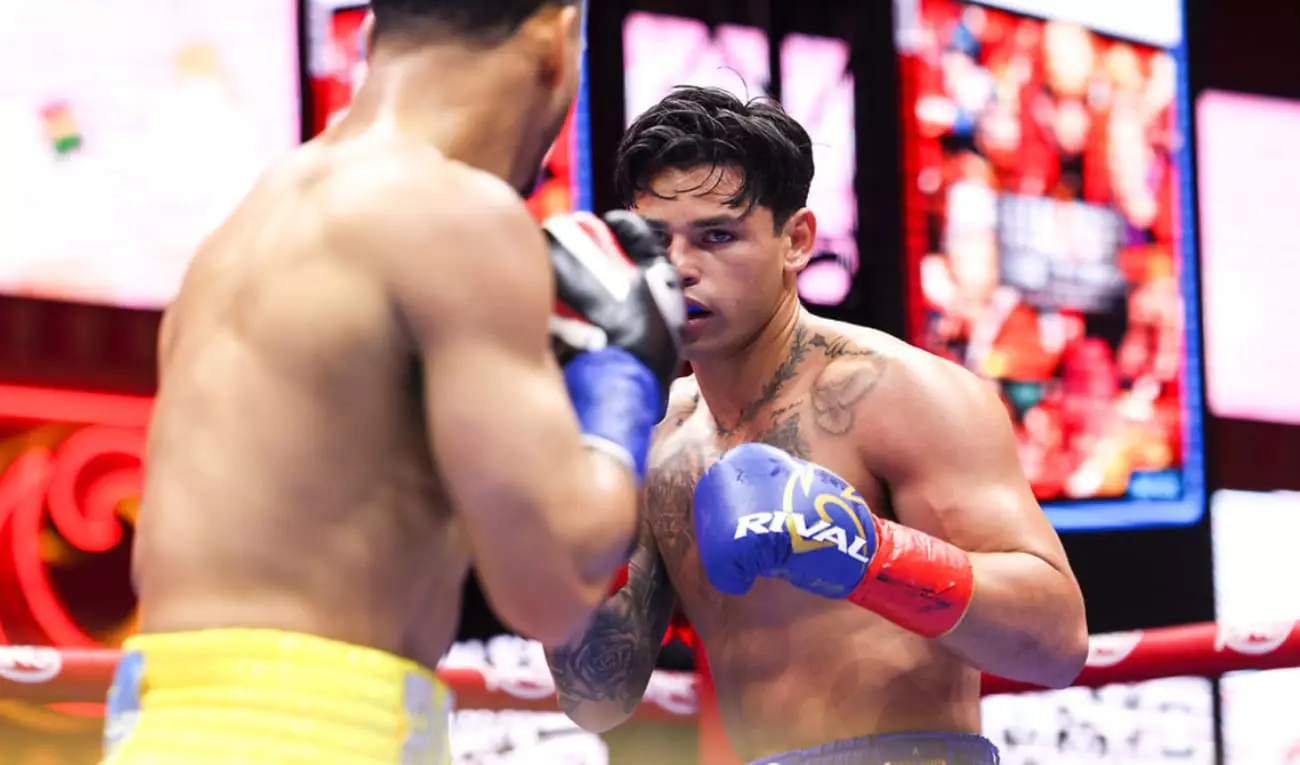Oscar De La Hoya’s recent stance on the future of Ryan Garcia’s career marks a pivotal moment in modern boxing strategy. By explicitly dismissing a rematch with Rolando “Rolly” Romero, De La Hoya signals a shift away from predictable rematches that lack fan excitement and commercial appeal. The primary critique lies in Romero’s limited marketability and the underwhelming nature of their initial bout, which De La Hoya himself labeled as “dull.” This decision underscores a broader understanding that boxing today revolves around compelling narratives and star power rather than mere competitive rematches.
De La Hoya’s focus on avoiding a rematch with Romero reveals a strategic intent to elevate the sport’s entertainment value. Romero, despite capturing titles at 140 and 147 pounds, has yet to establish genuine star status or draw a significant audience. His fights tend to lack the excitement necessary to attract broad pay-per-view interest. Consequently, De La Hoya’s reluctance suggests an awareness that boxing must prioritize marquee matchups that captivate fans, rather than repeat bouts that do little to grow the sport’s global appeal.
Targeting the Right Opponent: The Case for Teofimo Lopez
In shining the spotlight on Teofimo Lopez as a prime candidate for Garcia’s next opponent, De La Hoya is making a calculated move. Lopez, with a stellar 22-1 record and 13 knockouts, offers a compelling narrative: a seasoned star looking to cement his legacy and a younger, dynamic fighter eager to make a statement. The potential clash between Garcia and Lopez represents a fight with both high stakes and high entertainment value, capable of generating significant pay-per-view sales—particularly on DAZN, a platform eager to secure blockbuster bouts.
What adds appeal to this matchup is its marketability. Both fighters have sizable followings, and their contrasting styles promise fireworks inside the ring. Moreover, the fact that this fight promises to be Lopez’s return to the spotlight after a recent win suggests a narrative of redemption and competition among top-tier talent. Such a fight aligns with De La Hoya’s desire to elevate Garcia’s career while maximizing revenue and fan interest.
Strategic Implications: Negotiations, Money, and Career Trajectories
Securing a fight with Lopez, however, involves complex negotiations. The involvement of key figures such as Turki Alalshikh indicates the importance of high-stakes negotiations and financial incentives in orchestrating mega-fights. Lopez’s recent purse of $10 million for his fight against Arnold Barboza Jr. sets a benchmark, but a bout with Garcia—who earned $20 million in his last appearance—would demand a substantial pay raise, shifting the financial landscape.
De La Hoya’s decisions also reflect a recognition of Garcia’s contractual and career dynamics. Given that this upcoming fight is Garcia’s final engagement under Golden Boy Promotions, the focus shifts from long-term planning to strategic positioning. By targeting high-profile opponents like Lopez, Golden Boy aims to maximize Garcia’s marketability and ensure a lucrative exit from his current contract, setting the stage for potentially better opportunities elsewhere.
De La Hoya’s reluctance toward a Romero rematch not only emphasizes a desire for more engaging fights but also indicates broader strategic thinking about the sport’s future. This move underscores boxing’s ongoing evolution, where the matchups are carefully curated to balance entertainment, marketability, and financial rewards, ultimately seeking to elevate the sport to new heights of global appeal.

